In the heart of bustling city life, where space is a premium and nature feels like a distant friend, a vertical garden offers a vibrant slice of greenery that can transform your apartment into a sanctuary. Whether you’re a seasoned gardener looking for a fresh challenge or a budding enthusiast eager to start your plant journey, growing a vertical garden can be both rewarding and surprisingly simple.
Imagine waking up to a lush wall of ferns and flowers in your living room or a fragrant herb garden right in your kitchen. This article will guide you through selecting the right plants, the best structures to support them, and tips on maintaining your vertical oasis with ease. With practical advice and creative ideas, you’ll find that even the smallest spaces can flourish with life and color.
Embracing vertical gardening not only enhances your living space aesthetically but also contributes positively to your well-being by purifying the air and reducing stress. By the end of this article, you’ll feel equipped and inspired to create a thriving vertical garden, regardless of your prior experience or available space. Let’s embark on this green adventure together, turning your apartment into a personalized haven of growth and beauty.
Select Suitable Vertical Planters
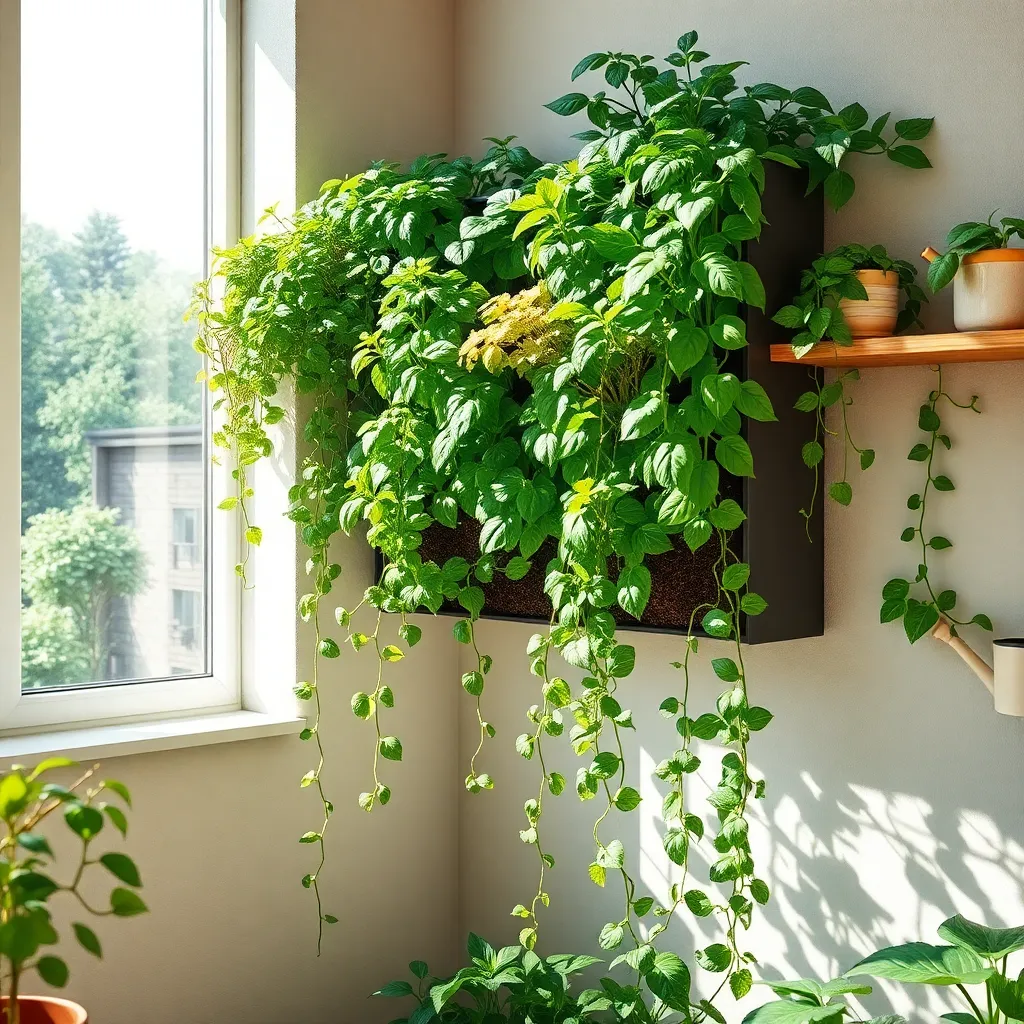
When selecting vertical planters for your apartment garden, consider the amount of natural light your space receives. Choose planters with materials that suit your environment, such as lightweight plastic for humid areas or metal for drier climates.
Wall-mounted planters save space and can accommodate a variety of plants. Ensure they have adequate drainage to prevent waterlogging, which can lead to root rot.
Freestanding vertical planters with multiple tiers offer flexibility and are perfect for larger spaces. They allow you to easily rearrange plants based on their growth requirements, such as moving sun-loving plants to the top tier for maximum exposure.
For beginners, starting with a simple pocket-style fabric planter can be a great choice. These are easy to install and maintain, and they allow for quick adjustments as you learn about the water and light preferences of your plants.
Choose Space-Saving Plant Varieties
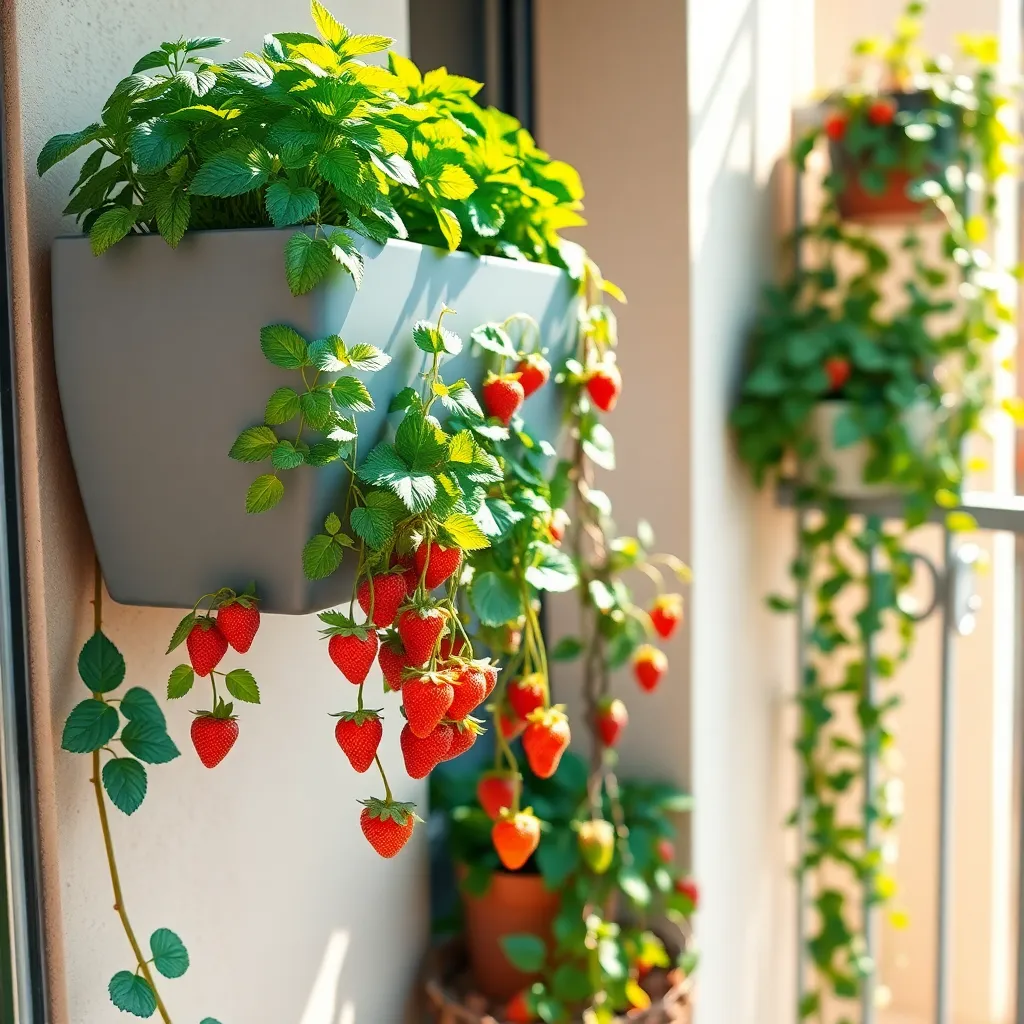
When growing a vertical garden in your apartment, choosing space-saving plant varieties is crucial for maximizing your limited area. Opt for plants that are naturally compact and have a vertical growth habit, such as herbs like basil, thyme, and mint, which thrive in small spaces and can be harvested frequently.
Consider using trailing plants like ivy or pothos, which can cascade downwards, creating a lush, green wall without taking up much horizontal space. These plants are not only visually appealing but also easy to maintain, requiring only moderate light and watering once the top inch of soil feels dry.
For those looking to add a pop of color, dwarf varieties of vegetables like cherry tomatoes or compact peppers are ideal. These plants can be grown in small pots and need at least six hours of sunlight daily, so placing them near a south-facing window will ensure they receive adequate light.
Experimenting with air plants is another fantastic option, as they do not require soil and can be attached to vertical supports using wire or adhesive. Regular misting and soaking them in water once a week will keep them healthy, making them a low-maintenance choice for your vertical garden.
Install Sturdy Wall Supports
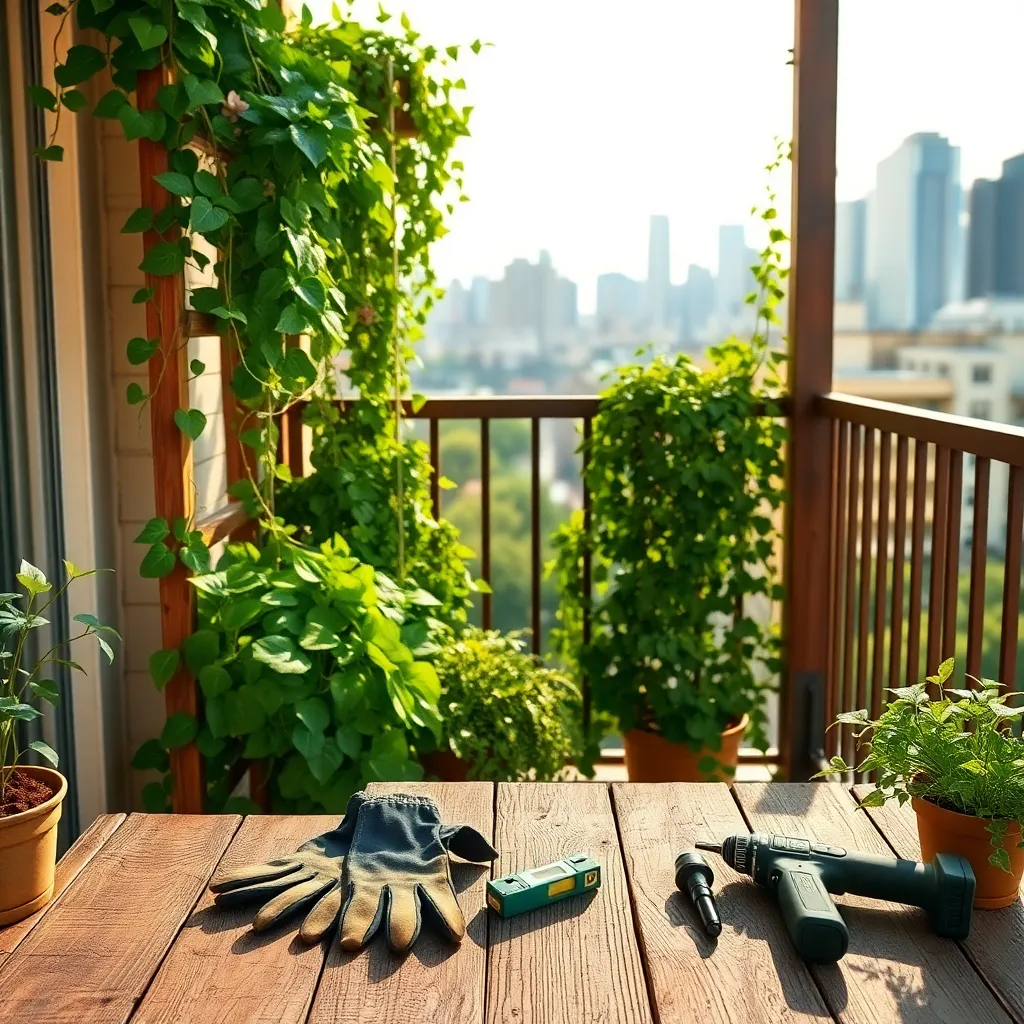
After selecting the right space-saving plant varieties, the next step is to install sturdy wall supports for your vertical garden. These supports will ensure that your plants have a solid foundation to grow upwards, maximizing your apartment space efficiently.
Consider using materials like metal grids, wooden trellises, or strong plastic panels. Metal grids are particularly durable and can support heavier plants, while wooden trellises add a natural aesthetic to your indoor garden.
When installing wall supports, make sure they are securely anchored to the wall to prevent any risk of collapse. Use heavy-duty wall anchors or screws that can handle the weight of both the support and the plants.
It’s important to place your supports in a location with the right light conditions for your chosen plants. Most vertical gardens thrive with at least six hours of bright, indirect sunlight each day, so choose a wall that receives ample light.
For those with less natural light, consider supplementing with grow lights to ensure your plants receive the necessary energy to thrive. LED grow lights are energy-efficient and can be adjusted to provide the specific spectrum of light your plants need.
Arrange Plants for Optimal Sunlight
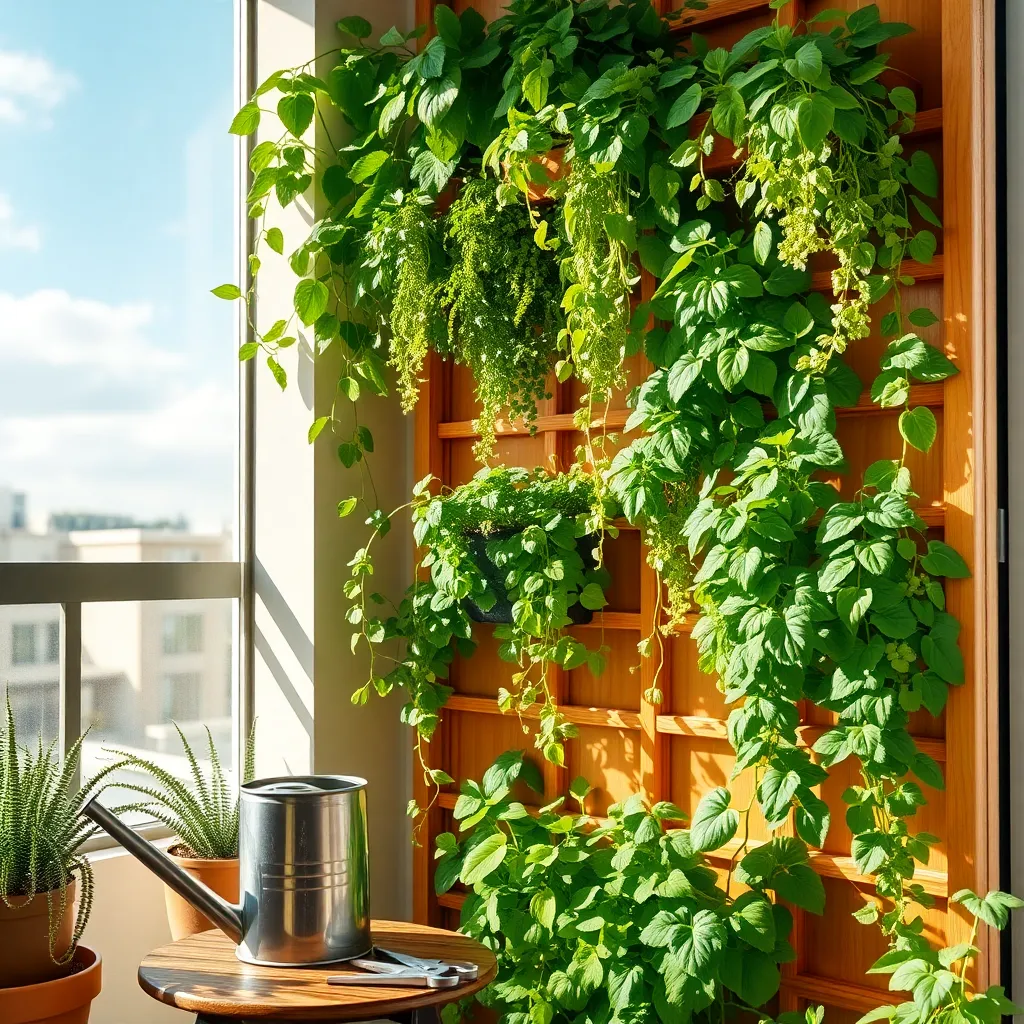
Arranging your plants for optimal sunlight is crucial in a vertical garden, especially in an apartment setting. Begin by observing how sunlight travels across your space throughout the day, noting areas that receive direct, indirect, or filtered light.
Next, categorize your plants based on their sunlight needs. Plants like succulents and herbs such as basil love direct sunlight, so place them on the top tier of your vertical setup where they can bask in the sun’s rays.
For plants that thrive in indirect light, such as ferns or pothos, position them on lower tiers or where they are shielded from harsh midday sun. This setup mimics their natural understory environment, ensuring they receive sufficient light without getting scorched.
Consider rotating your plants every few weeks to promote even growth and prevent them from leaning towards the light source. This simple practice can maintain balanced growth and ensure all sides of the plant receive adequate light exposure.
Ensure Proper Watering System
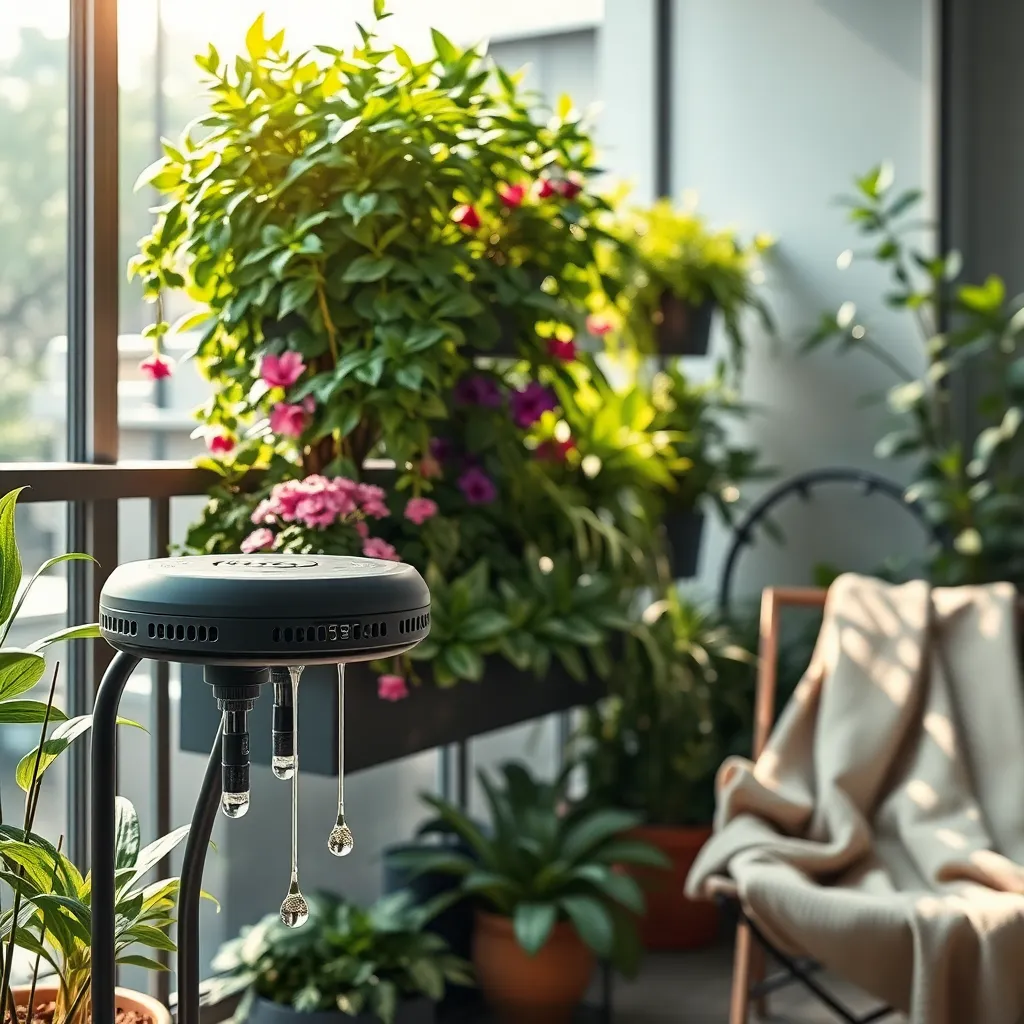
Watering is a crucial aspect of maintaining a healthy vertical garden, especially in an apartment setting where space and resources are limited. To ensure your plants thrive, it’s important to establish a consistent watering schedule that aligns with their specific needs.
For most vertical gardens, a **drip irrigation system** is highly recommended because it delivers water directly to the roots, minimizing waste. You can easily set up a basic system using a timer to automate watering, making it both efficient and time-saving for busy apartment dwellers.
Consider the individual water requirements of each plant species in your vertical garden, as some may need more frequent watering than others. For instance, succulents and cacti require less water compared to leafy greens or herbs, which thrive in more moist conditions.
It’s also essential to monitor the moisture levels of your soil regularly. Insert your finger about an inch into the soil; if it feels dry, it’s time to water. Alternatively, consider investing in a **soil moisture meter** to take the guesswork out of watering and maintain optimal soil conditions.
For those looking for an advanced approach, integrating a **self-watering system** can be a great solution. Such systems can be especially beneficial if you travel often, as they ensure your plants receive consistent hydration without daily intervention.
Conclusion: Growing Success with These Plants
In exploring ‘How to Grow a Vertical Garden in Your Apartment,’ we discovered five key relationship concepts that can not only enhance your green space but also your interpersonal connections. First, communication is akin to understanding plant needs—both require attentive listening and response. Second, patience, like nurturing a seedling, is essential in nurturing relationships. Third, creativity in arranging your garden parallels finding innovative ways to keep relationships vibrant. Fourth, commitment is mirrored in the dedication to maintaining your garden’s health. Lastly, adaptability is crucial, as seen in adjusting to your plants’ growing conditions, just as it is in relationships.
As an actionable next step, select one plant to start your vertical garden and discuss with a partner or friends how these concepts can apply to your relationships. By incorporating these principles, you’re investing in both personal growth and deeper connections.
Remember to bookmark this article as a handy reference for ongoing inspiration. As you cultivate your garden, envision the flourishing relationships that await with continued care and effort. Embrace this journey with optimism, knowing that your dedication today sows the seeds of tomorrow’s relational success.

